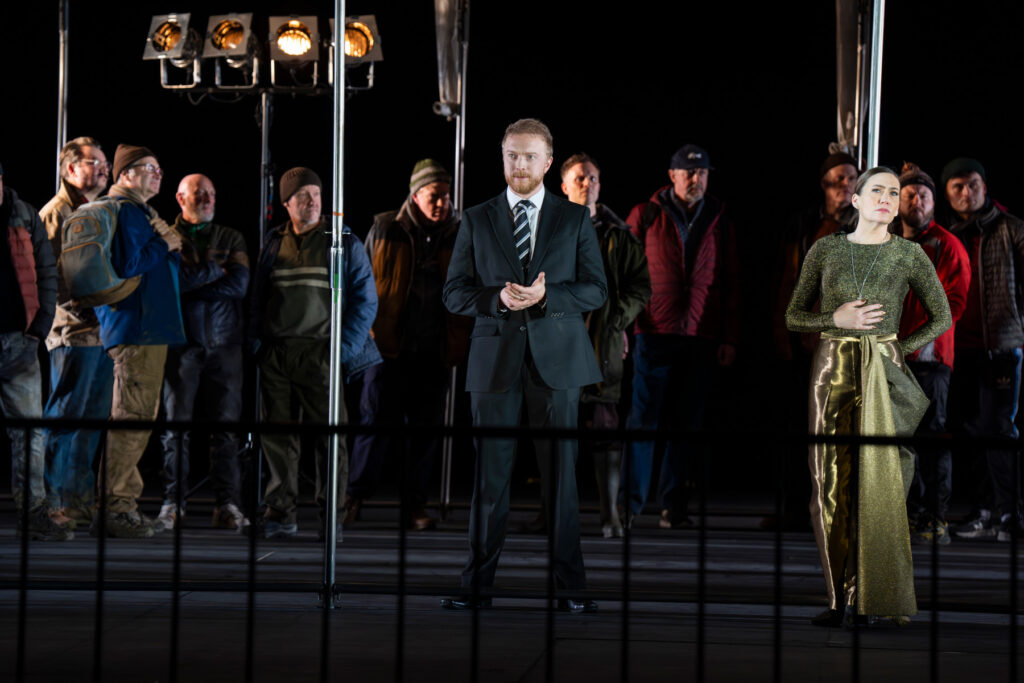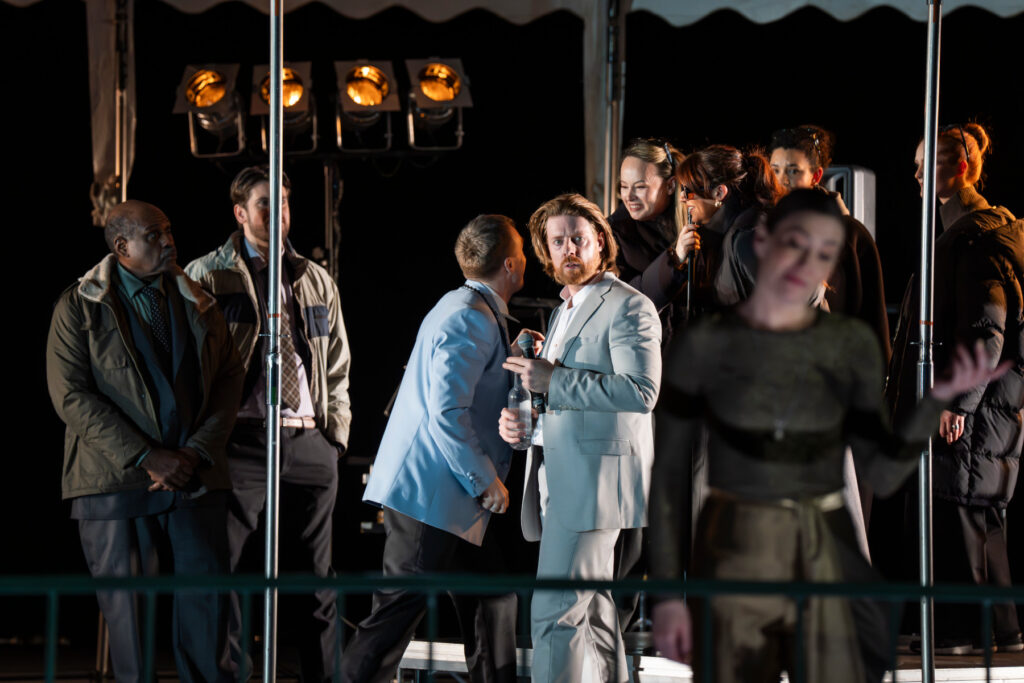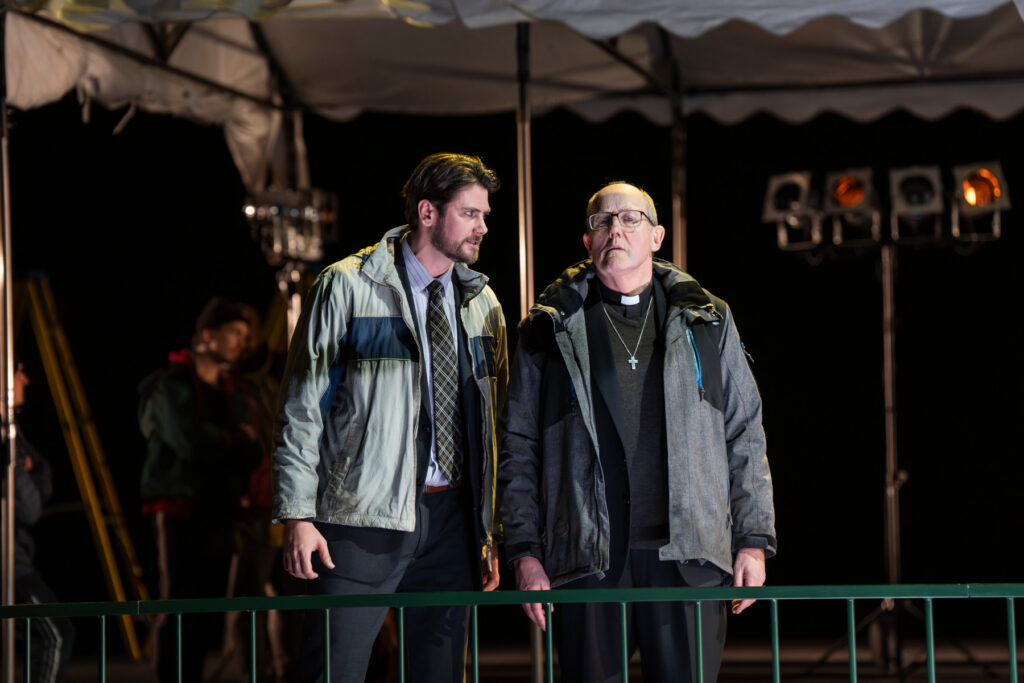Given the obsession with the Tudors – particularly as TV, stage or literary drama, as well as historical documentary – it makes for a welcome variation on this subject that English National Opera should mount Thea Musgrave’s Mary, Queen of Scots (1977) dealing loosely with historical events in other parts of the British Isles in that era, away from England. In fact, there are no English characters in the work, nor any mention of Elizabeth I’s realm to the south, until the very end of the opera when Mary is advised to take refuge in England when her half-brother, the Earl of Moray (James Stewart) raises a rebellion against her. As such, Donizetti’s famous opera, Maria Stuarda, setting Schiller’s play – located in England and featuring an imaginary confrontation with the Elizabeth – would segue very well.

The temper of Musgrave’s opera (for which she adapted Amalia Elguera’s play herself, for the libretto) however is rather different from Schiller’s philosophical musings on liberty and political power. Here, Mary has even less agency and is really the passive centre around which unscrupulous, ambitious men weave their schemes, on the whole at her expense. (Her defensive protestations, voiced desperately several times during the course of the opera, ironically suggest her powerlessness. It’s also clear in this production that she doesn’t lead Bothwell on or let herself be seduced by him but is very unwillingly raped.) And just as with another Schiller drama, Don Carlos (also memorably set to music in the 19th century) the problematic, encircling forces of religion are also shown to be at play with the imprisonment and offstage murder of Mary’s minister, Cardinal Beaton. The Queen remained a staunch Catholic in an increasingly Protestant country, and the reformer John Knox is mentioned several times in the libretto. Religion aside, the exploration of the political instability and factionalism at Holyrood proves rather prescient of the very recent problems encountered by the SNP – how tempting it must have been for a producer to draw parallels between Mary’s loss of political control and Nicola Sturgeon’s.
Amidst the power games in which Mary is used as a pawn, her personal and emotional turmoil is only implied more than explicitly expressed in the text. But Musgrave makes it eloquent in the music itself, with its generally ominous background against which the words are set with an often Britten-like directness and clarity, seamlessly mixing in plainsong and traditional Scottish music along the way (some courtly dances too, and the historical era can’t help but recall Gloriana). Mary’s grief is arrestingly conveyed in Heidi Stober’s performance – at first she sounds reticent and otherworldly, as though Mary’s person barely registers among the machinations of Moray, Bothwell (James Hepburn), and Darnley. Later on, Stober powerfully captures the Queen’s frustration and desperation.

Stewart Laing’s production seems to want to downplay the high politics of the original scenario, and brings the personal conflicts to the fore by reinterpreting them as the feuds among a contemporary town or village community, apparently celebrating a local fete – with Beaton as nothing more than the parish priest, leading a semi-chorus in the opening passage, initially the impression arises that the rest of the opera itself may be staged as a play-within-a-play, as some sort of historical pageant. But no such meta-narrative takes off, and the action is played out directly, within and around a marquee which is erected and brought down during the first two Acts; dressed in drab coats and woollen hats, the participants appear ready for the worst of the Scottish weather. In the last Act Mary is left on a bare platform or bench, contemplating her baby in a pushchair (her child with Darnley, James VI of Scotland and I of England, in whose favour she is forced to abdicate). Curiously, and presumably coincidentally, in setting this Scottish historical drama in the ordinary here and now, it’s not unlike Dmitri Tcherniakov’s 2009 Paris production of that other, more famous Scottish Play in Verdi’s opera, which placed the Macbeths among an unremarkable modern housing estate in the country. As Laing’s marquee is set in an otherwise empty, black space, the concept is not as glib as it might seem – though it begs the question as to how and why such personal skirmishes in that context can have any momentous political consequences. Nevertheless, it remains an otherwise generally abstract and uncomplicated backdrop against which the intricacies of the political intrigue are clearly declaimed and left to speak for themselves, and consequently the personal relationships emerge in sharper definition, often choreographed by Alex McCabe across the full width of the stage as though like a cartoon or story strip.

A highly accomplished cast ably bring out those relationship in their idiomatic interpretations, where their musical performances alone serve well to identify the different characters among quite a large number of principals. Alongside Mary, Rupert Charlesworth takes centre stage with a vivid account of her second husband Henry Stuart (Lord Darnley) – variously wheedling and unsure of himself initially, nervous and impulsive in Act Two as he whimpers that the people don’t accept him. He breaks down in impotent fury as the Iago-like insinuations of Jolyon Loy’s Earl of Morton and Ronald Samm’s Earl of Ruthven menacingly drive him to suspect Mary’s betrayal of him with his friend and secretary, David Riccio. The latter role receives a suavely lyrical account by Barnaby Rea, his sonorous bass complemented by the more forthright authority of Darren Jeffery’s Beaton, until both are suddenly silenced.
Bothwell and James Stewart receive exacting, unwavering performances from John Findon and Alex Otterburn, all the more threatening for their unfussy delivery. Lord Gordon is cast here as a blustering clergyman, with something of a guttural briskness by Alastair Miles, that puts one in mind of some sort of Protestant firebrand preacher, like Iain Paisley. The only other female parts apart from the Queen (all also Marys) are very small indeed, but are efficiently realised here. In the pit, Joana Carneiro and the ENO Orchestra offer persuasive, brooding support without being obtrusive, the score’s foreboding hues unforced. The Chorus are equally engaged, making a powerful impact on stage.
Coming just a few days after the premiere of Mark-Anthony Turnage’s Festen down the road at Covent Garden, this has been a good week for British opera from contemporary composers.
Curtis Rogers
Mary, Queen of Scots
Composer & Libretto: Thea Musgrave (libretto after Amalia Elguera’s play Moray)
Queen Mary – Heidi Stober; James Stewart, Earl of Moray – Alex Otterburn; Henry Stuart, Lord Darnley – Rupert Charlesworth; James Hepburn, Earl of Bothwell – John Findon; David Riccio – Barnaby Rea; Cardinal Beaton – Darren Jeffery; Lord Gordon – Alastair Miles; Earl of Ruthven – Ronald Samm; Earl of Morton – Jolyon Loy; Mary Seton – Jenny Stafford; Mary Beaton – Monica McGhee; Mary Livingstone – Felicity Buckland; Mary Fleming – Siân Griffiths
Director & Designer – Stewart Laing; Lighting Designer – DM Wood; Associate Costume Designer – Mady Berry; Choreographer – Alex McCabe; Conductor – Joana Carneiro, Chorus & Orchestra of English National Opera.
The Coliseum, London, UK, 15 February 2025
Top image: Heidi Stober and cast
Photos © Ellie Kurttz